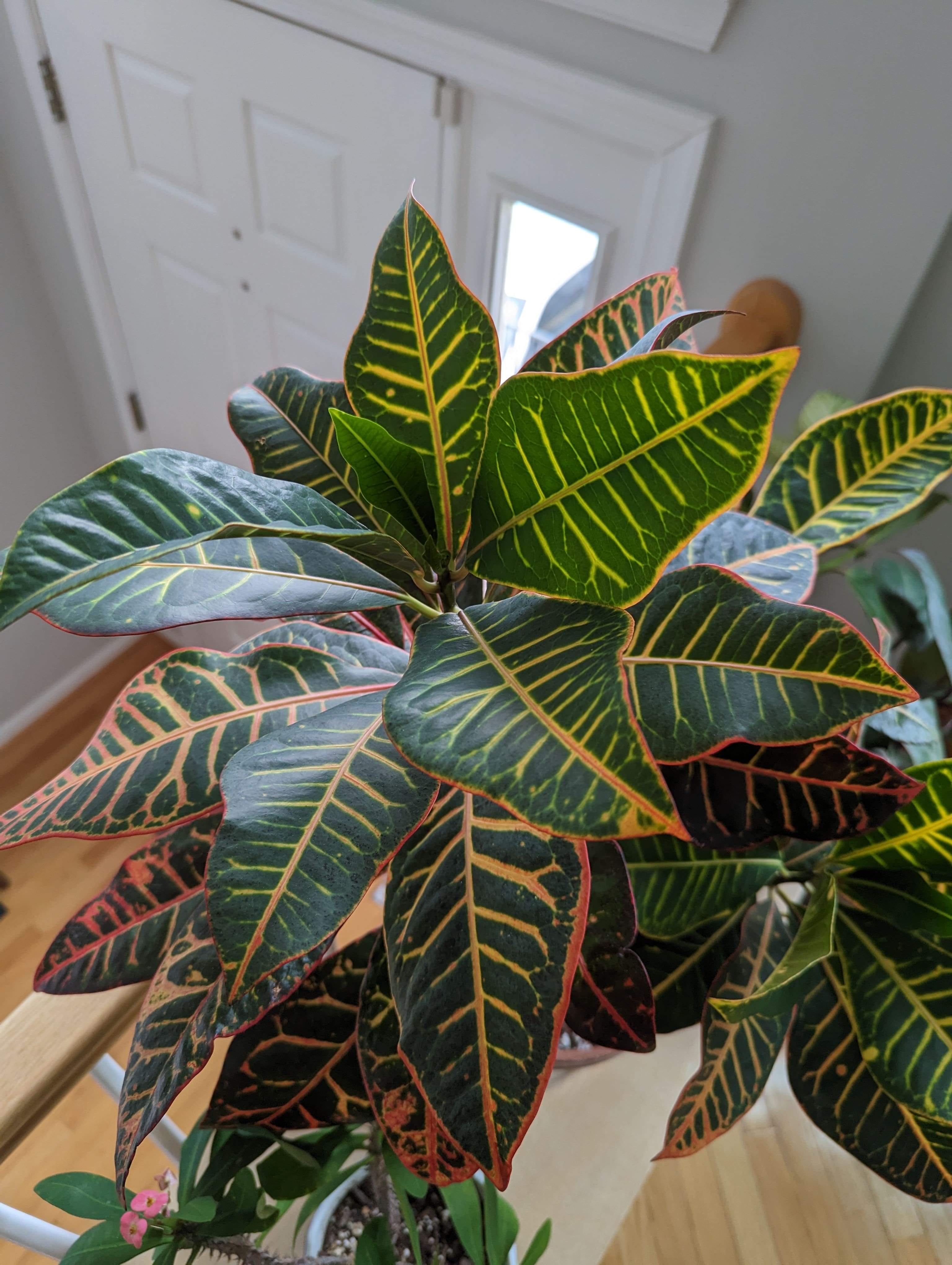Croton Light Requirements
Croton plants can be found in a number of varieties. They are known for their flashy foliage. Crotons sport leaves that are multicolored with varying patterns. They are also diverse in their leaf shape, where some are long and thin, some have three lobes, and some have the more common oblong oval shape. Adequate light is paramount in making sure that your Croton leaves are looking their best. Read along to learn all you need to know about Croton light requirements.
Croton Light Requirements
Crotons prefer bright direct sunlight if you can provide it. Especially as indoor plants, generally speaking, they should be in a pot that can offer the strongest light available in your house. If you have a south-facing window that's ideal but a western or eastern-facing window may work as well. To provide you Croton with the most direct light, avoid areas with obstructions to the outdoor light. If you have a south-facing window but there's a giant oak tree in front of it, maybe you should pick a different window. The closer to the window the better as well when you're looking to provide bright direct light.
Many people will have difficulty finding spot in their house with bright direct light. Or maybe they'll prefer to keep their plants further from the window. That's okay, Crotons can adjust to lower levels of light. They might not look quite as vibrant or as colorful as they could be in optimal light, but they can survive and look pretty good nonetheless.
Croton Light Changes
If you need to move your Croton, or you're bringing it home for the first time from the store, then you need to know about acclimating. Crotons have a flair for the dramatic when it comes to light. If you move your Croton to a spot with a significant difference in light, your plant may go into shock (I told you, dramatic). Shock may result in drooping leaves or leaves falling off all together. To avoid such shocks, you should instead slowly move your Croton to its new spot slowly, moving it about a foot a day. If you're bringing it home from the store, assume it hasn't been getting much light if it's from a typical home improvement store. If you're bringing it home from a nursery that has a greenhouse roof or if it was outside, assume it has been getting a lot of light.
Croton Sunburn
It's uncommon indoors but Crotons can get too much light and become sunburnt. This is more likely to happen outdoors though. Some people like to take their plants outside in the summer, so it's something to be aware of. If you do choose to summer your Croton outdoors, you need to heed my advice about acclimating it to the outdoor sun. Sunburn is not ideal but it's rarely something that will completely kill your plant. Sunburn will appear as scorched-looking spots on your leaves. It can even look like someone painted the leaf with brown watercolor, so like an overall transparent brown tint to the leaf. It will most likely affect the topmost leaves rather than the lower ones.
Croton Low-Light
Crotons are not low-light plants. They can survive in less-than-optimal environments, but they won't look good. Crotons are known specifically for their colorful foliage. If they do not receive adequate light, the leave will not develop the colors they're known for. Don't panic if the new leaves are mostly green when they first emerge. While it could be a sign of low light, you won't know until later because Croton leaves start off mostly green and then develop color. See the photo below for an example.

In addition to lacking vibrant colors, a Croton that isn't receiving enough light will become leggy (the scientific term). When plants are not receiving enough light they stretch out to try and grow closer to their light source. Many plant-growing novices mistake that seemingly rapid elongated growth as a good thing, but it's not. Long thin growth like that is weak and will eventually succumb to flopping over from gravity.
Plant Light Meter
If you're ultra curious about the light in your house, I highly suggest this light meter. My recommendation for hobby gardeners is this plant monitor that does light, moisture, and nutrient measurements. I think it's superior to most in its price range because it lets you track the amount of light by the hour so you can know exactly how much sun you get all day, for many days. Other light meters in this price range only give you the light measurement at a single point in time, like when you're physically looking at the meter. Read my in-depth write-up on this plant monitor if you're interested.
Add new comment